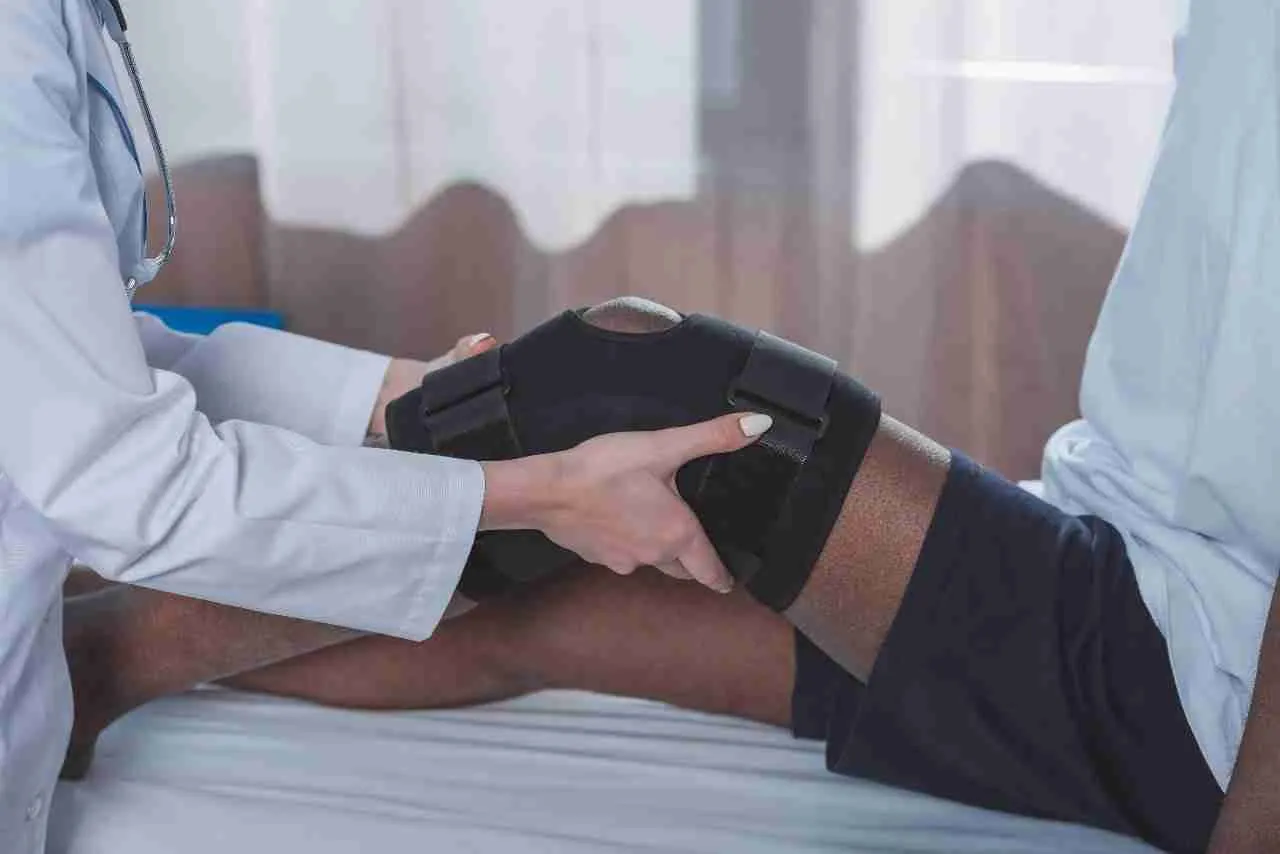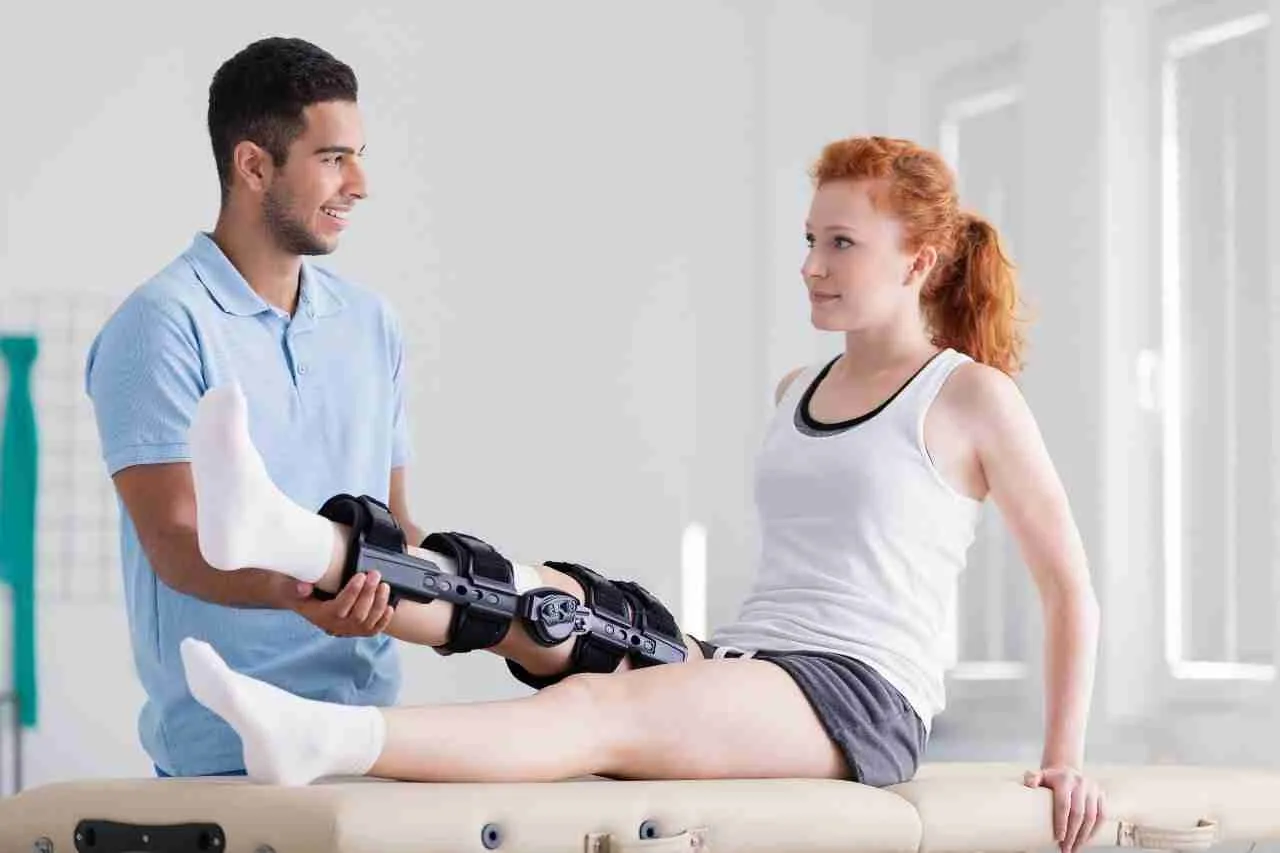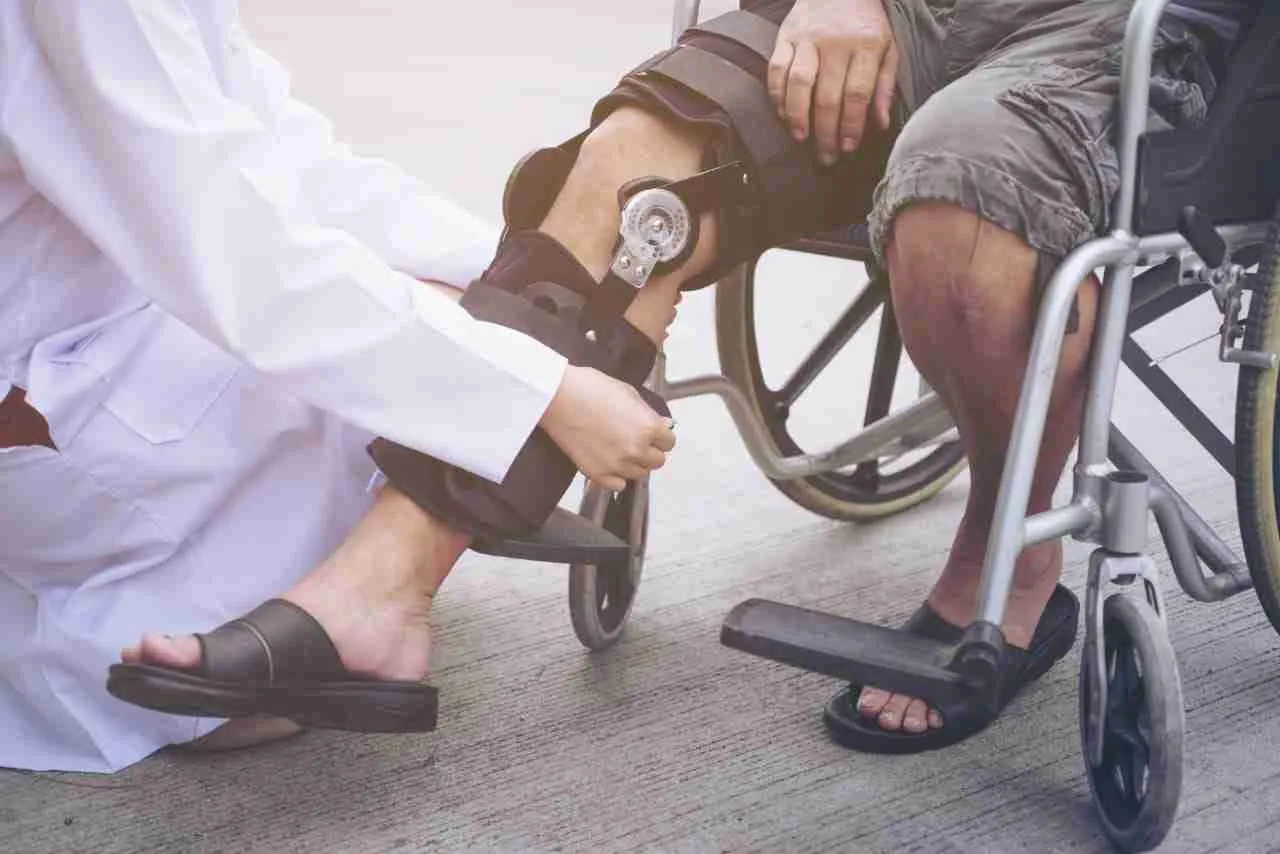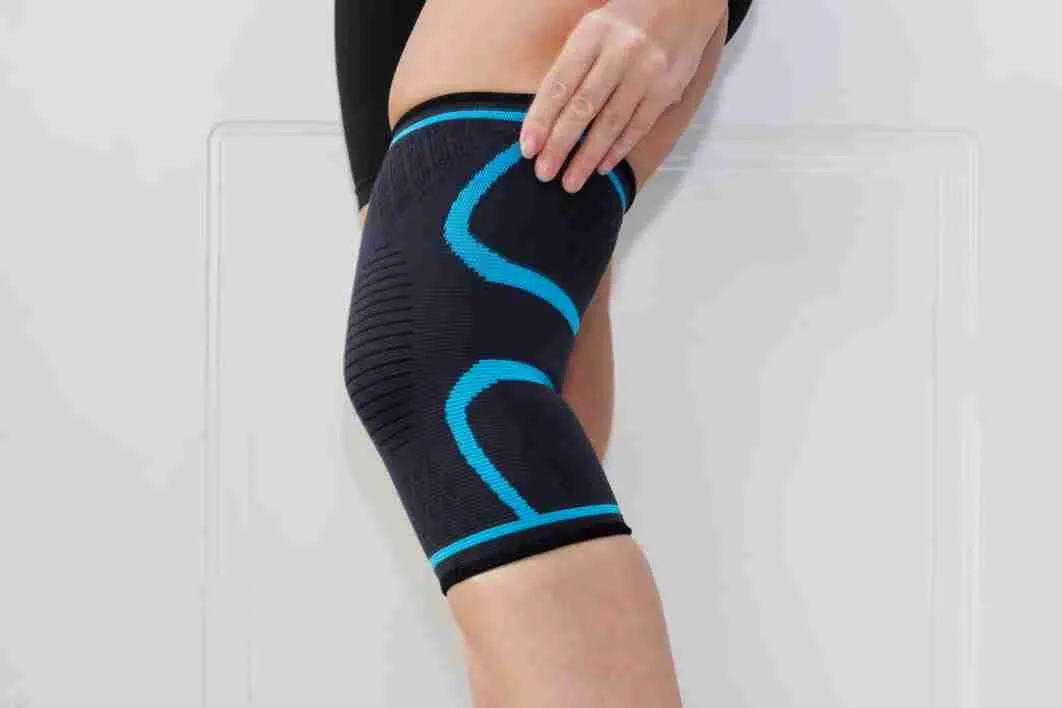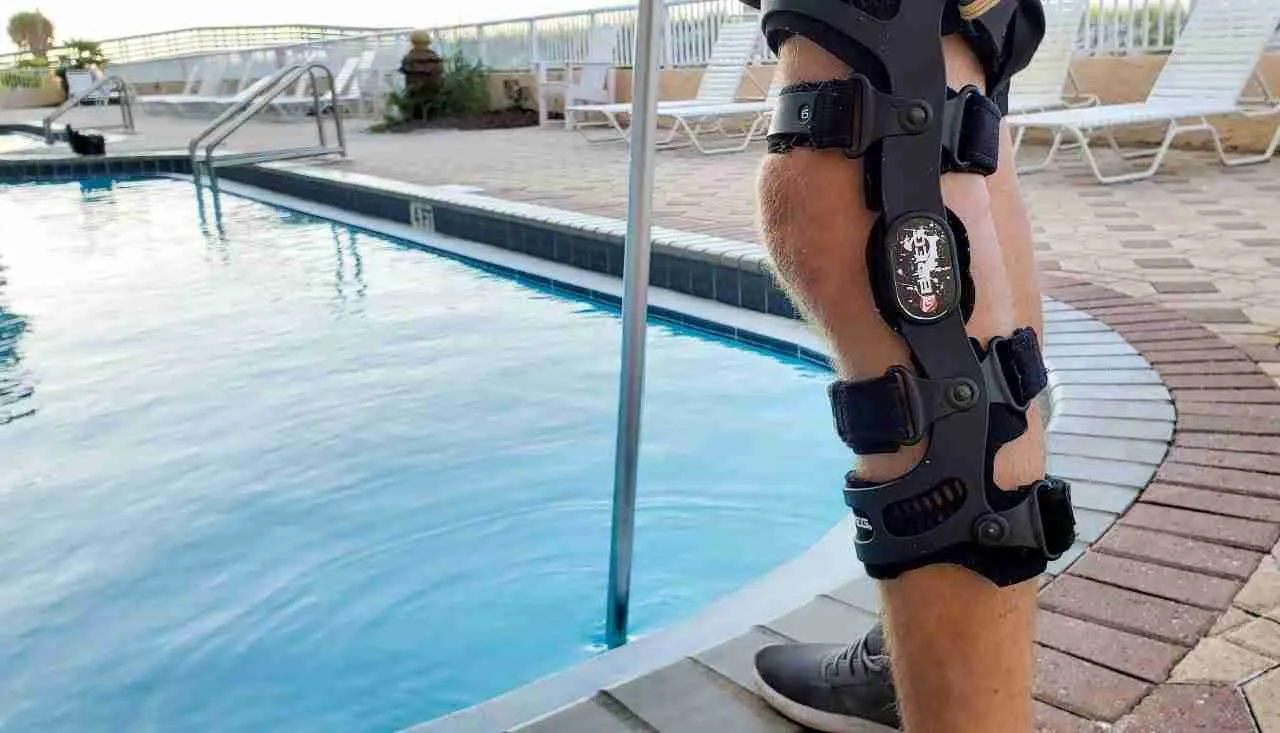Overview
Knee braces are special tools that serve a variety of functions, including the stabilizing of your joint. The primary use of knee braces is in the management of discomfort felt during osteoarthritis.
It helps reduce pain by taking some of the weight off the damaged portion of your knee. The brace will also help you walk around more confidently.
In this article, we will discuss different aspects of wearing a knee brace, including the available types.
The reason to wear a knee brace
Osteoarthritis (OA) is a widespread condition that involves the entire joint. For decades, researchers attributed the process of wear-and-tear to OA; however, recent evidence suggests that inflammation may play a more important role than previously thought.
Unfortunately, the knee joint is often subject to the structural destruction caused by osteoarthritis. Usually, this condition is unilateral, which means it only affects one knee.
As a result of unequal damage, you can develop knee malalignment, leading to a bow-legged or knock-knee appearance. The good news is that knee braces can shift off some of the weight from the affected joint, which relieves pain and alters the mechanics of your knee.
For those who feel that their knee is about to buckle when they put weight on it, a knee brace helps them walk around more confidently.
The downsides of wearing a knee brace
Similar to any other prosthetic device, knee braces might lead to some side effects, including:
Discomfort wearing the brace – patients may complain of the heavy nature, bulkiness, or hotness of the knee brace. Additionally, a poorly-fitted knee brace can easily slip.
Skin irritation and swelling – for individuals with sensitive skin, wearing a knee brace may lead to irritation and redness. In rare cases, a knee brace can cause edema (i.e., swelling) around the joint.
No benefit – some patients report experiencing no benefits after wearing a knee brace.
Joint stiffness – treating your braced knee as if it’s injured may lead to abnormal weight distribution and joint stiffness.
How you prepare for wearing a knee brace
The first thing you need to do is talk with your doctor. Explain your condition and express your hopes and fears. Working together with your doctor will help you come up with a mutual decision while considering the potential benefits/risks of wearing a knee brace.
After taking the decision, your doctor will give you a prescription and refer you to an orthotist. For those unfamiliar with this field, an orthotist is a healthcare professional who designs and develops braces and other prosthetic devices.
Note that custom-made knee braces can be costly. For this reason, you need to speak with your health insurance provider to confirm the types of braces covered by your policy.
What can you expect?
Besides custom-made knee braces, there are off-the-shelf braces. These may be satisfactory for what you are looking for. They are available immediately
On the other hand, custom-made knee braces take some time before they are ready. Generally, the process takes a few weeks and ends up with a final test to see if the knee brace fits your joint perfectly.
After your knee brace fitting
Your orthotist will teach you how to put on and take off your knee brace. If it has the adjusting option, ask your provider about the available options and how to maneuver them.
For optimal results, follow the instructions given by your doctor and orthotist about how and when to wear your knee brace.
After getting used to your knee brace, expect to walk with more confidence and without the constant fear of knee dislocation. Wearing your knee brace consistently provides you with stability and increases your self-esteem.
Moreover, some research suggests that knee braces help with functional symptoms, such as pain and stiffness, to improve your arthritis symptoms
What are the different types of knee braces?
Unsurprisingly, there are several types of knee braces made from different materials and serve unique functions. Speak with your doctor about the best knee brace for your condition.
Here are the common ones available on the market:
Unloader brace – these braces are generally made from molded plastic and foam padding. You can also find steel struts that prevent the knee from wobbling. Unloader braces are often custom-made with an adjustability option to lower the pressure on your inner and outer sides of your knee.
Note that these braces can be bulky, which is a common source of complaint from patients.
Hinged knee brace: As the name implies, a hinged knee brace has a hinge portion on both sides of the knee to support walking. You can find hinged knee braces as over-the-counter products. We often use these braces to stabilize medial or lateral collateral ligament injury.
“Brace that is typically used during surgical recovery or after a recent injury.”
“Brace that provides additional ligament support for patients with chronic ligament issues or arthritis.”
Drop-lock hinged brace –a drop-lock hinged brace has an adjustable hinge, making it the perfect option after an injury or surgery to the knee. The hinge can lock, which stops the knee from overextending or excessively flexing. This is a good choice of brace with patients who have an extensor mechanism issue.
Patellofemoral brace – a patellofemoral brace helps with patients with kneecap tracking problems. Many of these patients complain of pain in the front of their knees. This brace helps with the stabilization of the kneecap during motion.
Neoprene sleeve brace –the final type of knee brace comes with the kneecap area cut out. It is commonly pulled over the knee. It also has a low profile, allowing it to be concealable under your pants. However, these properties make it less efficient compared to other types of braces.
Functional Braces – These braces are commonly provided after an ACL injury or reconstruction. These braces can allow patients to resume physical activity while providing additional support.
Takeaway message
Wearing a knee brace can offer several benefits for people with knee problems. The thorough discussion of this option with your doctor allows for better decision-making to relieve your suffering.
We hope that this article highlighted knee braces’ role in the treatment of knee pain and injuries.
If you still have any questions or concerns about knee braces, scheduling an appointment with Dr. Morton!

